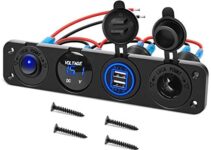- In 2014, the Port of Los Angeles gave a 50-year lease to an aging wharf called City Dock No. 1 to a project called AltaSea.
- AltaSea is a non-profit project founded in 2014 that in less than 10 years has become a leading ‘blue economy’ research hub focused on renewable ocean energy, sustainable aquaculture and other blue technologies.
- Hub tenants include marine renewable energy startups, sustainable aquaculture projects, a marine seed bank, a research effort aimed at decarbonizing oceanic shipping, and other projects.
- This article is an analysis. The views expressed are those of the author, not necessarily of Mongabay.
Ports are considered lifelines of our economy, accounting for 75% of world trade (over 90% by tonnage), but generally not thought of as incubators to solve the climate crisis or protect ocean health. That may have changed several years ago when the Port of Los Angeles gave a 50-year lease to an aging wharf called City Dock No. 1 to AltaSea.
AltaSea is a non-profit project founded in 2014 that in less than 10 years has become a leading ‘blue economy’ ocean research hub focused on renewable energy, sustainable aquaculture and other blue technologies.
I recently got to tour AltaSea’s San Pedro campus on its City Dock wharf built in 1913 when the Panama Canal was the cutting edge in marine technology. It’s sandwiched between 30 and-80-foot-deep saltwater channels near Angel’s Gate, one of two ship entries to the Western Hemisphere’s largest port complex.
AltaSea’s 35-acre campus includes three 60,000-square-foot warehouses built in 1914 and now undergoing renovation. Tenants include R&D start-ups located in converted shipping container offices, university projects, state agencies and artists. It’s powered by a four acre solar roof array that can be tapped into during a port emergency. In addition, AltaSea offers labs and classrooms for visiting students from area schools. One of their favorites is a ‘pirate ship interior’ once used as the set for a Miley Cyrus music video.

It also has community college programs leading to jobs in ocean farming, underwater robotics and the electrification of ports and shipping to reduce diesel pollution as transportation decarbonizes.
CEO Terry Tamminen, who refers to AltaSea as “a modern blue economy, education, workforce training and business incubator,” argues its purpose is to have a multiplier effect, as ocean/climate solutions need to quickly develop and scale up commercially.
One example: in October 2023, California Governor Gavin Newsom signed into law wave energy research legislation sponsored by AltaSea. One of its first test beds will be a series of power floats on the miles-long seawall shared by the ports of LA and Long Beach.
With the promise of offshore wind farms soon to be generating power in deep waters off of California, there’s also a tenant company using a 3-D printer to produce hollow concrete weights that could hold floating wind platforms to the ocean floor while storing surplus energy generated by their turbines.
UCLA and USC have two high-tech barges on the inner channel competing over how to draw carbon dioxide out of seawater using electrolysis to convert the CO2 either into calcium carbonate for construction or ‘green hydrogen’ for shipping fuel.
There are also aquaculture projects on the wharf including a marine seed bank storing over 60 species of potentially endangered algae and sea grasses, tanks of ‘sporeless’ brown kelp that could be grown for food or fuel in any ocean without the risk of becoming an invasive species, and another project that plans to grow kelp on long lines towed by oceanic robots for use as bio-aviation fuel.

One giant Rube Goldberg-like contraption docked at the inner channel soars high above its adjacent warehouse with massive air duct-like piping and a flexible hose designed to cap a container ship’s smokestack and convert its dirty emissions into a recoverable and recyclable product.
Another tenant is ocean explorer Bob Ballard and his research vessel E/V Nautilus that’s home-ported here. Other blue hub supporters include former Governor Arnold Schwarzenegger (Tamminen used to be his cabinet secretary) and Board Chair Dr. Geraldine Knatz, the former Director of the Port of LA, also known as the mother of the Greening Ports movement.
Among AltaSea’s 27 working tenants to date, one of the easiest for a non-PhD observer to understand is the Eco Wave Power company’s energy floats, with their bulky simplicity. Outside one of the warehouses is a big blue metal float with a hydraulic elbow joint attached to a converted shipping container. When installed on the seawall there will be six connected floats per container. Looking inside the container, you see automated control panels and long air canisters that convert the up and down paddle energy of the floats into compressed air that generates electricity via a turbine.
AltaSea being located in LA’s original port town tied to the opening of the Panama Canal and across a channel from a World War II victory ship – the SS Lane Victory – it’s easy to reflect on historic moments, including the one we’re living in now. The last nine years have been the hottest in recorded history with 2023 slated to become the hottest yet. Wildfires, heatwaves, droughts, storms and floods (WHDSF) seem to mark the transition from dangerous to catastrophic climate change. This suggests the need to grow solutions faster than the looming threat.
Recognizing the need for a global network, AltaSea is helping establish other blue hubs at ports in New Jersey and Rio de Janeiro. “Whatever innovations we come up with, or they come up with, are not going to become solutions for the climate crisis fast enough if they don’t scale,” explains Tamminen, “and so one way to make things scale is to share them quickly with other hubs who can then right-size or adapt them for their local economies.”
And that, of course, would be in keeping with AltaSea’s logo that, “The Future is Blue.”
David Helvarg is an author, writer, Executive Director of Blue Frontier, an ocean policy group and co-host of the Rising Tide Ocean Podcast.
Banner image: An old wharf has become something quite new in Los Angeles. Image courtesy of AltaSea.
Related audio from Mongabay’s podcast: Reporter Andrew Willner discusses sustainable cargo sail shipping solutions, listen here:
See related coverage:
Podcast: Indigenous, ingenious and sustainable aquaculture from the distant past to today
New age of sail looks to slash massive maritime carbon emissions


